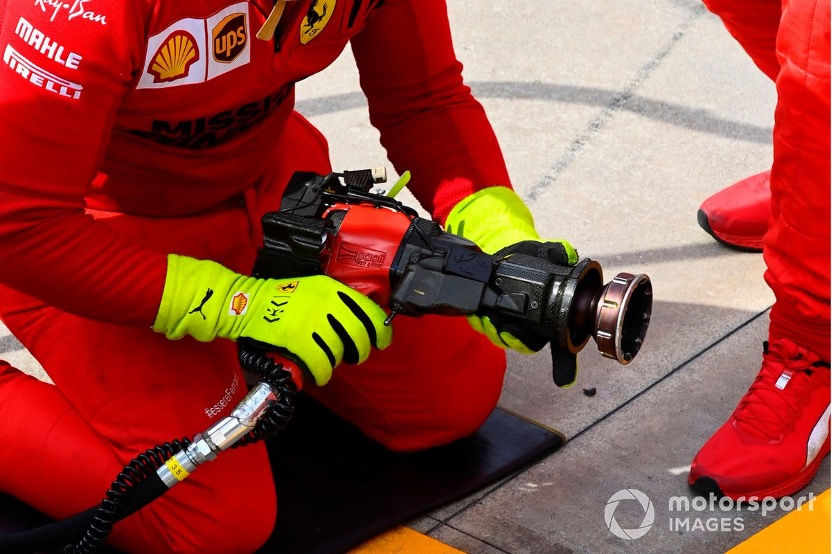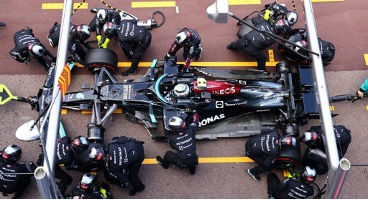F1 wheel guns explained
- Huan Alpha
- 2024年9月2日
- 讀畢需時 2 分鐘
In a Formula One pitstop, the main objective is to replace the used tires with brand-new slicks. After 2010, due to safety concerns, fuel replenishment is no longer allowed during a pitstop, so the speed to change tires became an extremely crucial factor that determines the pitstop time, which has to be minimized under racing conditions to obtain track positions. Out of all the crew members servicing the car, four men always kneel beside each tire, holding a gun-like machine that seems to have the ability to loosen and fasten a wheel in a matter of milliseconds. Well, what’s the magic behind it? Now let’s jump straight into the mechanics of a wheel gun!

Figure 1.1 A Ferrari mechanic operating his wheel gun
First of all, Formula One wheel guns are pneumatic, meaning that they are always connected to a source of compressed air through air hoses. The benefit of compressed air is not only about stability (constantly supplying air with 362PSI) but also because it generates high air pressure due to its high density of air molecules, hence producing higher torque of 3000Nm that allows the wheel gun to spin faster (9000rpm), minimizing fastening or loosening time. When the tire gunner, or the mechanic who operates the wheel gun, pulls the trigger, the torque produced acts as a highly advanced screwdriver. The wheel nut, which allows the tire to be intact, then loosens, allowing another mechanic to pull the wheel off the braking disk. After this, the wheel gun automatically changes its direction, so now it is spinning in a direction that can tighten the newly placed wheel.
After we finished explaining the basic mechanics, now let’s take a look at an interesting and special scenario. Normally, a modern formula one pitstop lasts between 2 to 3 seconds, but have you ever witnessed a pitstop that lasted for days? Valtteri Bottas’s 2021 Monaco experience provides a definite ‘yes’ to this question. During his pitstop during the race, the wheel gun operator tried multiple times to loosen the wheel and finally noticed that it was completely stuck, forcing Bottas to a bizarre retirement. The reason behind this incident is that the wheel gun’s surface is not perfectly aligned with the wheel nut, so once the operator pulls the trigger, there’s not enough grip to loosen the wheel nut. As a matter of fact, this mismatch caused rubbing on the wheel nut’s surface, wearing it to an irregular shape, consequently, making it impossible to loosen even though the second time might be completely matched.

Figure 1.2 A snapshot of the pit box skirmish, the problem shown at the right front of the car
To sum up, F1 wheel gun is a sophisticated machine, and also extremely difficult to operate. If this task is given to a normal person, with such colossal torque, they can’t even hold it stationary, which really proves that the fantasy of this sport not only exists on track but also off the circuit.










留言